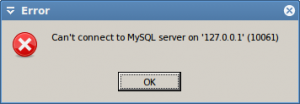I wrote a long email to TekSavvy, but they have conveniently given me no place to send it, so fuck it, I’ll post it here.
So far, my experience with Tek Savvy is anything but pleasant.
I made enquiries last week and signed up this week. I spent a considerable amount of time browsing and configuring my account, and managed to change an email address associated with billing, but not the overall email address for the account. No problem. Get onto chat and ask them to change it. Despite the simplicity of changing a SINGLE database entry, turns out your support people are NOT very tech savvy. No, I have to go through the process of creating and configuring a whole new account.
Get onto the sign-up page and go through the process of creating an account. (Remember, I am using my phone’s hotspot for now, which is slower than molasses and costing me a mint, while I wait for my modem.) Won’t work. Get back on chat. A person with a name this time confirms that she can’t edit a database entry either, and that my “customer ID number” has to be entered without the letters that you so helpfully put into it. I’ve lost track now how many times I’ve “chatted” to your not-so-helpful support personnel. 4? 5? 6? Did you know that most programming languages helpfully strip unwanted characters (e.g., letters) from data entered into a form field so that entering “ABC1234567” results in just “1234567”? Didn’t think so. Computer Science 101 might be helpful.
On every attempt to sign up, I enter all the information and click the “Confirm account” button, only to have the page sit there with the button and the form fields greyed out, and no network activity. I tried several times. On one of my many attempts to “chat” with support, I was told that this “must be” the fault of the web browser (easiest excuse for the uninitiated in the tech support book), the latest version of the browser I have been using for years with no problems, Firefox. It can’t possibly be that your site is defective, because that’s just not possible. No, I’m encouraged to use my phone to use the form, which also uses Firefox because, just like with the Canadian ISP I’m trying to choose, I’m trying to exercise my choice to choose something else other then the oligopolies (namely Google, which you support person suggested) I’m presented with.
So with your support person apparently willing to lose a client because he can’t use your website, she dumped me to figure it out on my own. Can’t possibly escalate the support ticket to someone who can write to your database, which would ABSOLUTELY be the most straightforward thing to do, and the least problem for your new customer.
Oh, and after all this, I received an email from Canpar to tell me that my modem is on its way … with all links for tracking and arranging the delivery “invalid”. This just gets better and better! Canpar tells me on the error page that they can’t help me, but suggest I “may want to contact the sender of the email message to see if they can provide an alternative link.” I laugh that off, because Tek Savvy can’t even help me with their OWN system!
So I await my modem to see what calamity awaits me. I can’t log into my account to rearrange the TV channels I want, so I expect more battles with your website in my “old” browser or hours on hold on my cell phone trying to deal with your unhelpful and very tech non-savvy support people.
